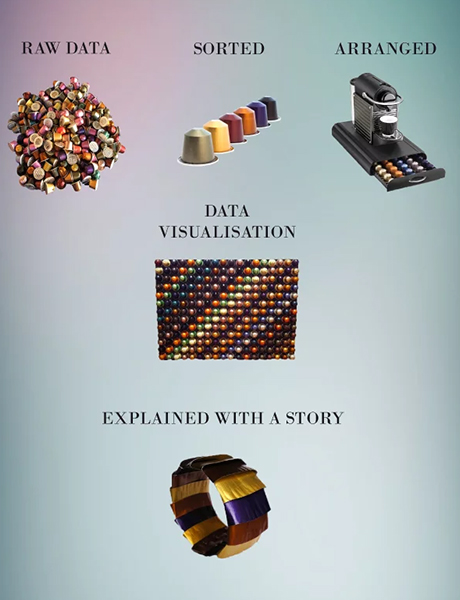Radi, data analyst
Welcome on board ! After reading this short article, you will have demystified all about data analysis.
Are you looking for a change in career and considering data analysis as part of your current position ? Or are you simply curious to know more about this “key” tool that can leverage many business issues ?
Ready to learn more…
What is Data Analysis?
To begin with, data analysis, is a process for obtaining raw data, and subsequently converting it into useful information to make data-driven decisions. Data, is collected and analyzed to answer questions or goals but also to test hypotheses, or disprove theories.
In everyday life, we face data. Hence, if you are watching on your health condition, you might have one of those fancies health watches indicating how many steps or km you have been walking a day. Furthermore, if you try to maintain a healthy weight, then you might have an app on your phone indicating a weight loss curve for you to follow up your progress. Finally, each time you watch on the online weather forecast, you look at a visualization of a bunch of collected data.
That said, how can data help us in business related issues :
Identify opportunities and trends
Serve customers
Improve processes
Launch new products
Make thoughtful decisions
and more
For a company, to hire a data analyst has indisputable value such as presenting quality data analysis on the firm’s consumers behaviors (online or offline) or launch a new product line after data-driven results and conclusions.
What is a Data Analyst ?
This question is totally legitimate as many people don’t know what a data analyst’s job looks like. First, a data analyst is either working as a consultant, in an agency or is part of a company’s department. Furthermore, his or her work is highly rated.
Secondly, business leaders or stakeholders usually come to see the data analyst with either an issue, a question or a problem to solve. Hence, the data analyst should never loose sight of the primarily scope given by the stakeholders. That said, the findings and conclusions should always answer the initial questions.
Data Analyst Tasks
In order to focus on solving the issue, question or problem as it should be, a data analyst follows below phases that are meant to be solved successively :
1. Ask :
ask questions to stakeholders to make sure the problem was correctly understood. The analyst will also need to know if previous analysis were made on the subject. If such is the case, the analyst will have to find the old team who worked on the project to collect the data that was already gathered. Moreover, the data analyst will have to find the most reliable data with the given time frame and stakeholders’ terms.
2. Prepare the data :
In this phase, the analyst will decide which data to collect for analysis and how to structure it. Hence, the analyst will need to be attentive to bias, credibility, ethics or privacy of the collected data. Furthermore, this phase will also allow to decide which databases to use and how to extract, filter or sort the data they contain. As the data is sensitive, this is also the right place to think how to organize and protect the data.
3. Process the data :
At this stage, the analyst will have to assess the integrity of the collected data. That said, the analyst must consider the overall accuracy, consistency and completeness of data. It involves a pre-cleaning activity of the data. Furthermore, it is vital to connect objectives to data by understanding how the business objectives can be served by an investigation into the data. Finally, an analyst should know when to stop collecting data. It is a sort of pre-cleaning activity.
4. Analyze :
This phase can be split into four steps which are : organize the data, format and adjust data, get input from others and transform data. The goal of analysis is to identify trends and relationships within data so you can accurately answer the question you’re asking.
5. Share :
At this stage, the analyst will have to make his findings visually appealing and present them to all stakeholders. In order to be successful in this phase, the data analyst will use several tools to create great and meaningful visuals to be integrated into a presentation. The analyst will make a test-run in front of colleagues to make sure all the information is clear and easy to process by stakeholders who sometimes have no clue about all the data work behind it.
6. Act :
Finally, this phase is the culminating point after months of data collection, preparation and analysis. Business leaders and stakeholders will have to make a data driven decision that will solve the initial question, issue or problem. The precious work of the analyst could help a business to avoid bankruptcy, better understand the customers or simply write another success story.
Once all these steps have been completed, the stakeholders can pursue with data driven decision-making that relies on solid data.
Data Analyst Skills :
Curiosity
Understanding context
Having a technical mindset
Data design
Data strategy
and more…
If you have all those skills, then…”go ahead” ! You might be the next data analyst competing on this lucrative market.
” In God we trust, all others bring data.”
W. Edwards Deming
If you have read this to the end, then we want to congratulate you for taking a next step further. GOOD JOB ☼ !
Now, you have gained some extra knowledge to impress your entourage. If you are looking for a data analyst, get in touch and let’s talk about your project : ShineBright Design Studio.









